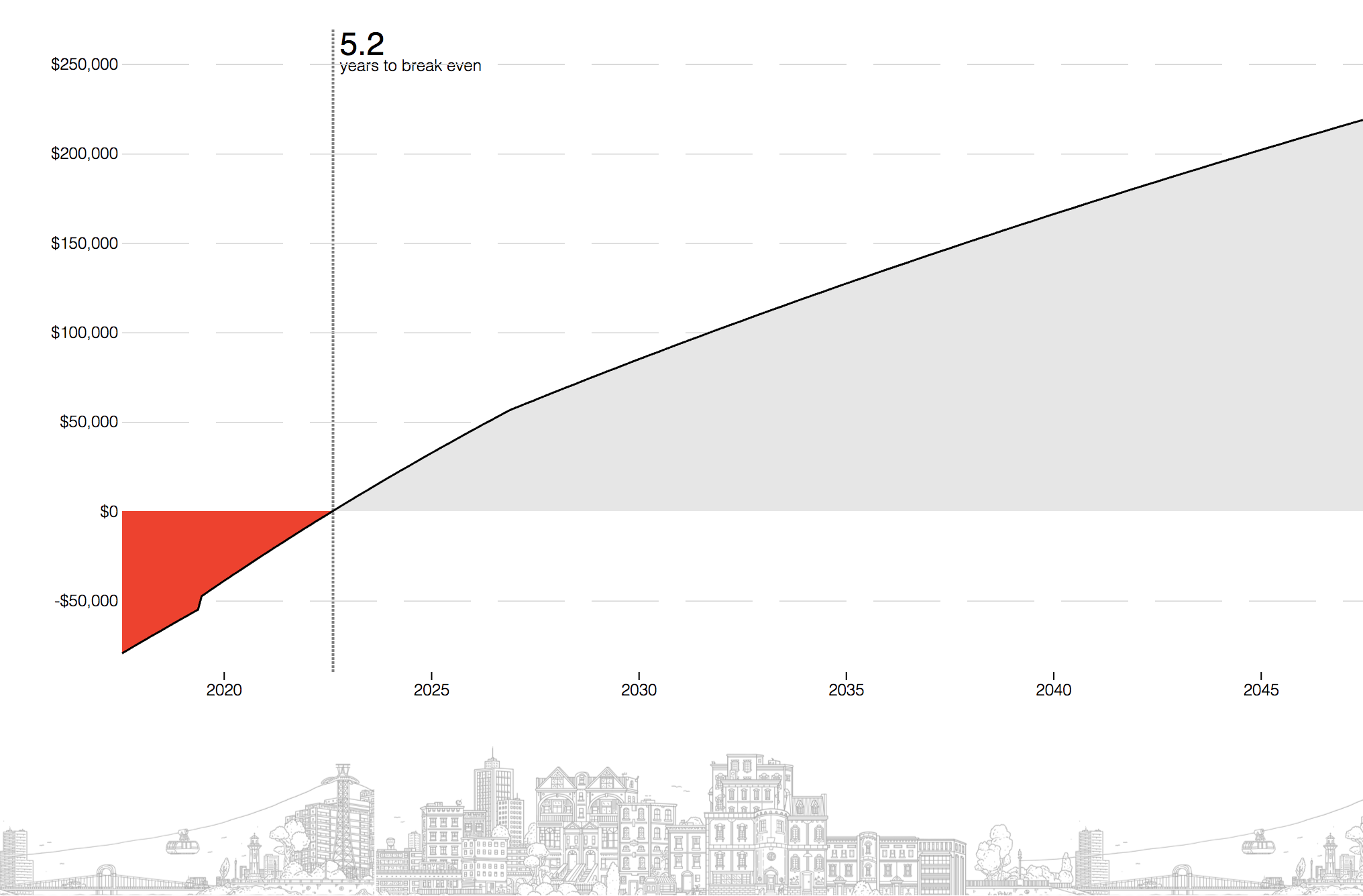A few months ago, we released the StreetEasy Tipping Point study, which helps answer the age-old question: Should I buy or should I rent? One important factor in making that decision is how long you plan to stay in your home. The tipping point helps to uncover just how long you’d have to stay put for buying to make more financial sense than renting in NYC.
As of the second quarter of 2017, New York City’s tipping point is 5 years – seven months shorter than the previous quarter. After living in your home for 5 years, the cost of renting would exceed the cost of buying, meaning it would likely make more financial sense to buy. Tipping points fluctuate greatly depending on borough and neighborhood, taking 30 years to reach in some places and arriving at just under two years in others.

Moving to a New Neighborhood Within Your Borough
Let’s say a resident currently renting a home in Boerum Hill – one of the most sought-after neighborhoods in Brooklyn – is now deciding where to buy a home. The median rent for a 1-bedroom apartment in Boerum Hill is $2,650 per month, while the median cost of a comparable home is $877,500. When deciding between renting or buying a 1-bedroom home within the neighborhood, their tipping point comes out to 5.9 years.
Conversely, if they decided to stop renting their current home in Boerum Hill and buy a home in a nearby neighborhood such as Clinton Hill, their tipping point shrinks by half to just 2.8 years. That’s a significant time difference for the costs of buying to outweigh renting – taking only half the time for buying to make more sense. Allowing for some flexibility in neighborhoods can be a boon to the future homeowner.
Moving to a New Borough
The difference in tipping points can be even greater when you choose an entirely new borough – particularly for New Yorkers currently renting in Manhattan who may not be able to afford to buy a home there.
For example, in Chelsea, it costs a median of $4,048 per month to rent a 1-bedroom apartment and a median of $1,212,500 to buy a comparable home. That leaves the typical Chelsea resident with a median tipping point of 5.3 years when choosing between buying or renting within their neighborhood.
But if that same resident currently renting in Chelsea were to move to a neighborhood in Brooklyn to buy a home, they would find their tipping point shrinks in several neighborhoods: It goes down to less than 3 years in Williamsburg, and less than 2 years in Park Slope, Clinton Hill, and Bushwick, for example. In fact, moving from renting in Chelsea to buying in any Brooklyn neighborhood yields a shorter tipping point than buying in Chelsea.
Head from Chelsea to Queens and you’ll see even shorter tipping points. With median 1-bedroom home prices at $500,000 in Astoria and $339,500 in Jackson Heights, tipping points drop even further to just 1.3 years and 10 months, respectively, as compared to choosing to continue to rent in Chelsea.
Test Out Neighborhood Combinations Yourself
With our interactive tool, you can find out your tipping point based on where you currently live, where you want to move, and your ideal number of bedrooms. This tool helps illustrate how long you’d need to stick around in your home to make buying more financially advantageous, and how moving neighborhoods can change the approachability of homeownership and quickly make more sense than renting.
How We Did It
The tipping point is the earliest point in time at which the net present value of owning a home exceeds the net present of value of renting, a product of a cost-benefit analysis between the two. To determine the equivalent rent for each home for sale, we assign an equivalent rent for each condo and coop listed for sale on StreetEasy by matching the median rent for a unit with the same bedroom count.
Our tipping point calculations account for costs of both owning a home and renting a home, and considers the opportunity costs of investing upfront fixed costs such as a down payment, closing costs, and a security deposit in alternative assets such as stocks or bonds, net of taxes.
Costs of homeownership include mortgage principal and interest; applicable federal, state, and city taxes; homeowner’s insurance; projected closing costs; and maintenance fees and common charges as listed on StreetEasy. Homeownership costs are net of mortgage income tax deduction benefits. Costs of renting include brokers’ fees, renters insurance, and monthly rent. Tipping points for a given geographic area reflect the median value for all applicable units in that area. For the purpose of this analysis, we project home prices, rents, and alternative investments to grow in line with long term New York City averages. Neighborhoods and unit type combinations without a minimum of ten rental listings and ten sale listings were excluded from this analysis.









